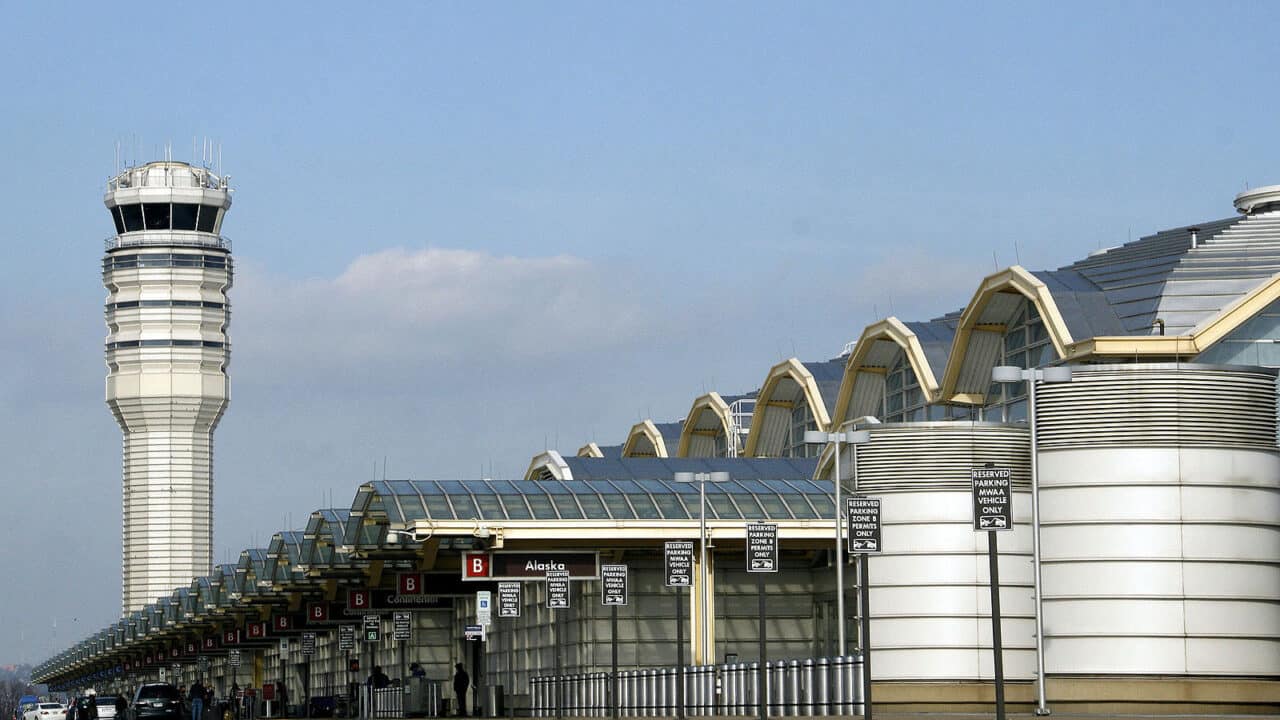 Photo by David on Flickr is licensed under CC BY 2.0: https://bit.ly/461EC3y
Photo by David on Flickr is licensed under CC BY 2.0: https://bit.ly/461EC3y
Ronald Reagan Washington National Airport (DCA) was named for a champion of freedom, deregulation, and consumer choice. Federal policies affecting the airport should better reflect this legacy, beginning with the outdated “perimeter rule.” In fact, Reagan Airport should be out from under Congressional micromanagement altogether.
In 1966, Congress established the perimeter rule, which limits the number of flights allowed between DCA and any location more than 1,250 miles away. In effect, the rule prevents airlines and their passengers from freely choosing the most efficient transportation options for themselves, instead forcing many travelers out of D.C.’s closest airport if they wish to travel to the western states. DCA is the only airport in the country subject to this federally enforced, anti-competitive perimeter rule.
If they ever made sense, the arguments for maintaining the strict limits currently imposed on DCA have become less and less relevant over time. The perimeter rule was originally designed, in part, as a protectionist measure to prop up the newly constructed Dulles International Airport (IAD) in the 1960s. However, the tripling of Northern Virginia’s population in the subsequent decades, combined with natural demand growth at IAD, has sufficiently established the long-term feasibility of the airport.
Additionally, some advocates of the perimeter rule have cited the possibility of noise pollution in the D.C. area as a reason to maintain the current restrictions. However, passenger aircraft are about 75 percent quieter today than they were when the perimeter rule was established and further significant reductions in noise output are expected over the next few decades, which should increasingly alleviate these concerns.
Recognizing the need for reform, various plans for adjusting the perimeter rule have been proposed. One bill introduced by Congressmen Burgess Owens (R-Utah) and Hank Johnson (D-Ga.) would allow an additional 28 daily flights in and beyond DCA’s established perimeter as part of the upcoming Federal Aviation Administration (FAA) Reauthorization bill. Boston Consulting Group (BCG) conducted a study on behalf of the Capital Access Alliance, a coalition in favor of adding more beyond-perimeter flights at DCA, which found that the current limitations on beyond-perimeter flights at DCA result in $500 million in costs to travelers due to above-average ticket prices, $1.8 billion in lost regional economic impact, and 5,500 lost jobs in the Washington, D.C. metro area.
The BCG study concluded that adding an additional 20-25 daily roundtrip flights at DCA would alleviate these costs, though a separate FAA report suggested that increasing the number of flights at the airport may lead to an increase in delays. Another proposed reform allows airlines to simply shift more of their current flight “slots” from in-perimeter destinations to beyond-perimeter destinations without increasing the total number of flights at the airport.
Congress really needs to get out of the business of micromanaging Reagan Airport altogether. It should be treated the same as any other airport. Ideally, the perimeter rule should be repealed in its entirety to maximize consumer choice and economic benefit. A bill to do so was introduced in 2018 but failed to gain traction in Congress. As a result, as Congress looks at FAA reauthorization it should consider incremental reform, while keeping its sights on eventual repeal.

